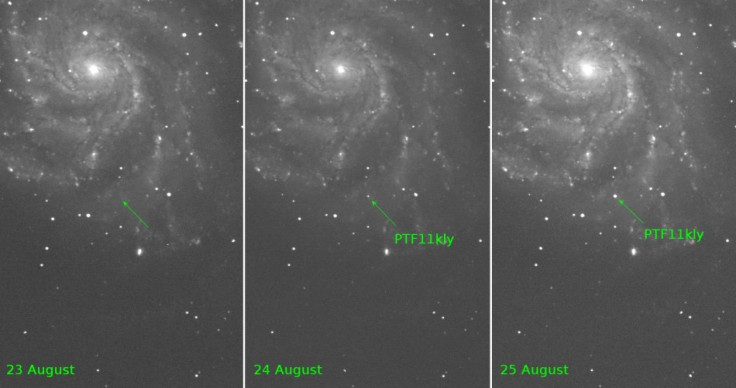Pinwheel Supernova the Brightest Stellar Explosion of the Decade

Astronomers at the Mount Palomar Observatory in California have claimed that their robotic telescope has detected what could be regarded as the supernova of a generation - a type of a supernova that resulted from the violent explosion of an old star twenty-one million years ago.
The findings recorded at the Palomar Transient Factory, an automated wide-field sky survey, mentions that their astronomers first detected the supernova on Aug. 23, 2011 in the M101 galaxy, also called the Pinwheel galaxy.
Owing to this galaxy's relative nearness with the Milky Way, scientists and astronomers from the Hubble, Keck Observatories and other places, swiveled to take a look at this interesting phenomenon which could provide vital details about stellar explosions.
As per astronomical descriptions, supernovae are stellar explosions which are triggered by either thermonuclear or gravitational energy. Some of the most historical supernovae include the Tycho's Nova or the SN 1572 or the Kepler's Star or SN 1604.
We know it's the youngest Type Ia ever observed. This thing just shot up out of nowhere. Now the race is on to accumulate as much data as possible and as quickly as possible, the Nature quoted Peter Nugent of Lawrence Berkeley National Laboratory in Berkeley, Calif.
The Pinwheel Supernova is expected to continue flaring till Wednesday or Thursday and can be seen just above the handle of the Big Dipper.
The Washington Post reported that cosmologists hope the new supernova will help refine estimates of the universe's acceleration. The data might even hint at the nature of dark energy. Professional stargazers also point to the Pinwheel supernova as the best candidate to fill another gap in their knowledge: the precise sequence of events that cause such explosions.
© Copyright IBTimes 2024. All rights reserved.





















